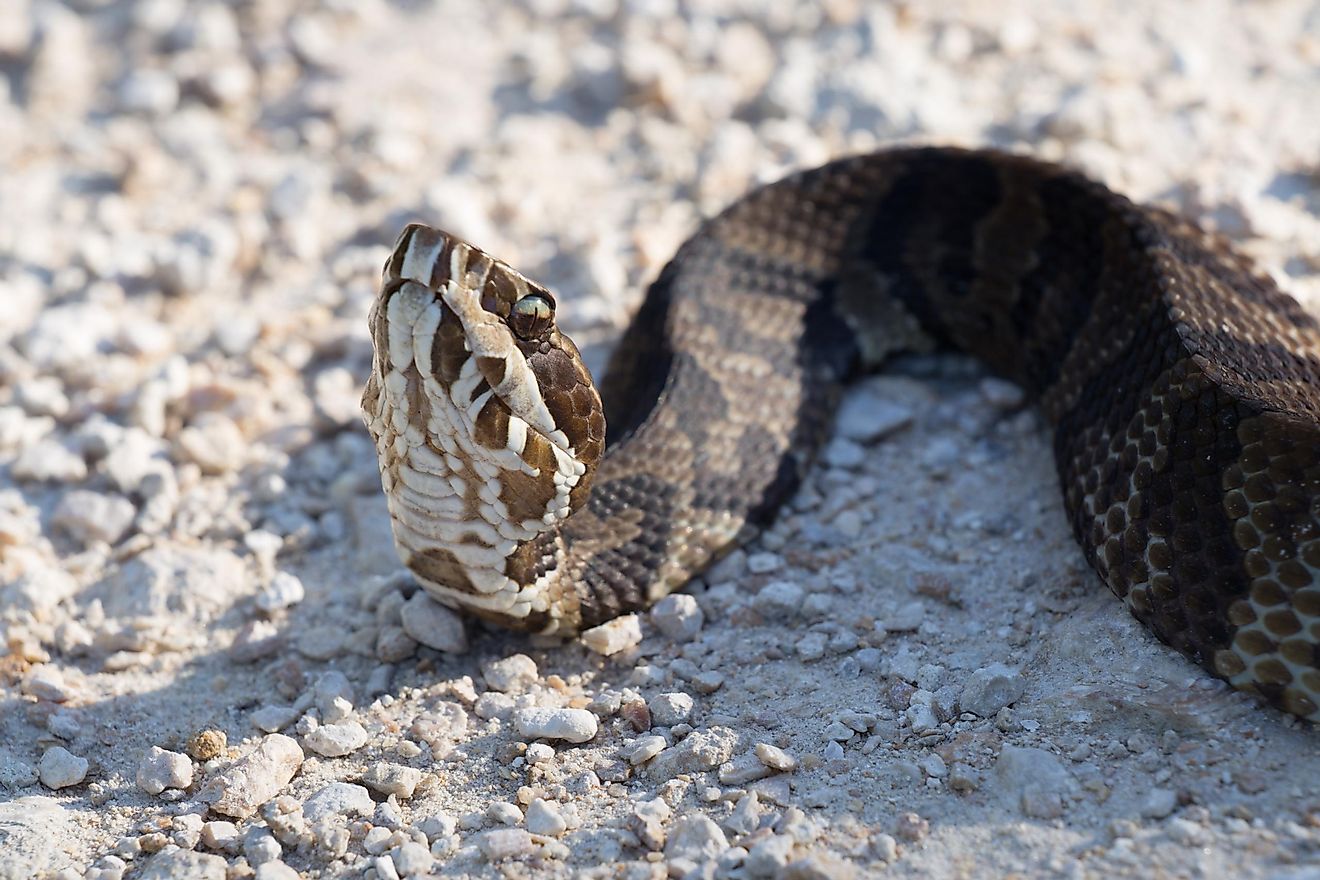Water Moccasin Facts: Animals of North America

5. Physical Description
The Water moccasin, whose scientific name is Agkistrodon piscivorus, is a venomous snake, and in fact a species of pit viper. It belongs the largest species of the genus Agkistrodon. Upon their external skin's scale pattern, there are six to nine supralabial and eight to twelve infralabial scales. Around their mid-bodies, there are 23 to 27 rows of dorsal scales, all of which have keels. Adults will commonly grow to exceed 31 inches in length, with females growing somewhat smaller than males. Male Water moccasins weigh between 10.32 and 20.44 ounces, while females are considerably less massive, weighing between 7.09 and 8.96 ounces. Though the majority of specimens are predominately, or even totally, black, Water moccasins of brown, gray, tan, or even yellowish-olive green colorations can also be found.
4. Diet
Water moccasin are opportunistic feeders, and will sometimes eat carrion to supplement their predation. Under most natural circumstances, however, they will usually opt to hunt fresh meat. Whenever a prey appears, Water moccasins become very alert, and will initiate their attacks immediately upon the first given opportunity. Although fish and frogs are their most commonly preferred forms of prey, they will eat almost any small animal and even invertebrates, including cicadas, caterpillars, land snails, catfish, pike, sunfishes, bass, sirens, and even squirrels, rabbits and bats. They will also capture fish by cornering them in shallow water, usually trapping them against waterway banks or under logs.
3. Habitat and Range
This pit viper species is to found in the eastern US, from the Dismal Swamp in southeast Virginia, south throughout the Florida Peninsula, and west to Arkansas, eastern and southern Oklahoma, west and south Georgia, and into east and central Texas. With varying frequency, they may also be found living in certain parts of the states of Illinois, Indiana, Kentucky, Louisiana, Mississippi, Missouri, North Carolina, Oklahoma, and South Carolina. They are most commonly found living in and around bodies of water, especially those such as creeks, streams, marshes, swamps and the shores of ponds and lakes. They are classified as having a Conservation Status of "Least Concern" on the IUCN Red List of Threatened Species.
2. Behavior
Often portrayed as being very aggressive and dangerous, Water Moccasins are in fact not typically not very aggressive at all. They may be active during the day, as well as at night. However, on bright, sunny days, they are usually found coiled or stretched out somewhere in the shade. In the morning and on cool days, they can often be seen basking in the sunlight, in order to warm their ectothermic bodies. They often emerge at sunset to heat themselves upon the ground, in preparations to then becoming very active throughout the night, when they are usually found swimming or crawling. They usually hibernate in the cold months of the winter season.
1. Reproduction
Mating season for Water Moccasins usually takes place during the warmer months of the year, with their young usually being born in August or September. Males often will engage in physical combat to show dominance, which is very important in their sexual selection, in order to attract sexually active females. Water moccasins are ovoviviparous (development of embryos inside of eggs within the mother's body until hatching time), with females giving birth each time to between one and twenty live young, while litters of six and eight are the most common. Neonates are 8.7 to 13.8 inches (22 to 35 centimeters) in length. After birth, they will often grow rapidly, given favorable weather conditions with food supplies ample to facilitate growth.











